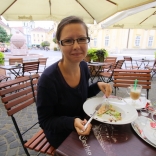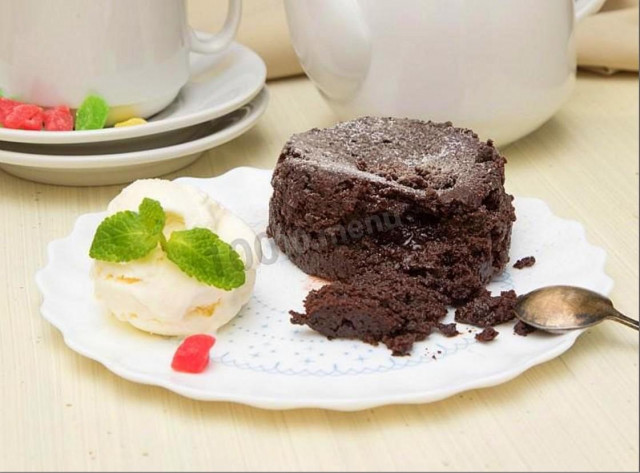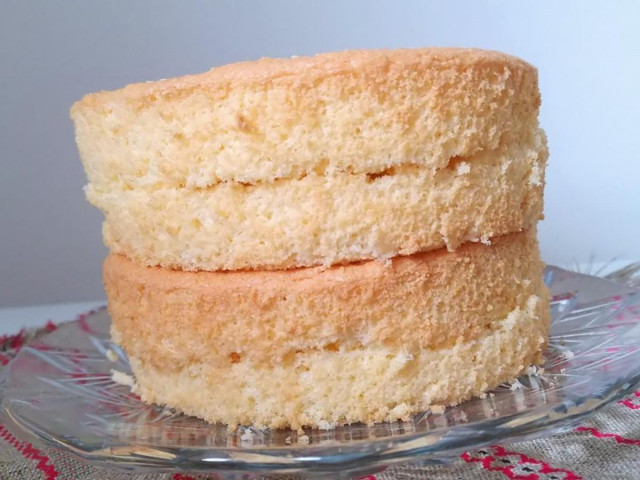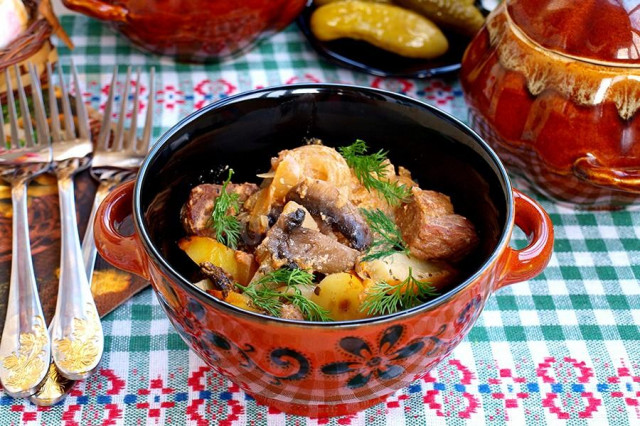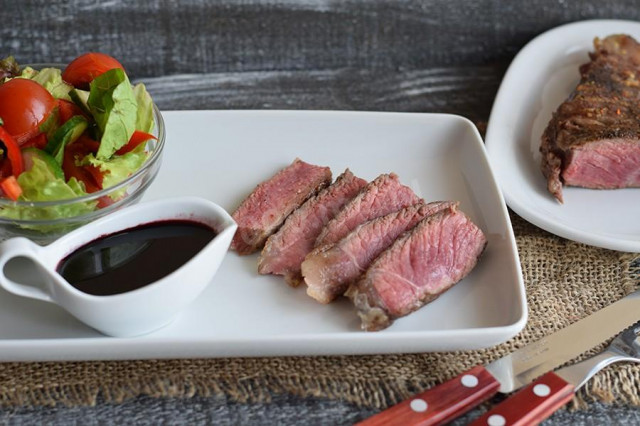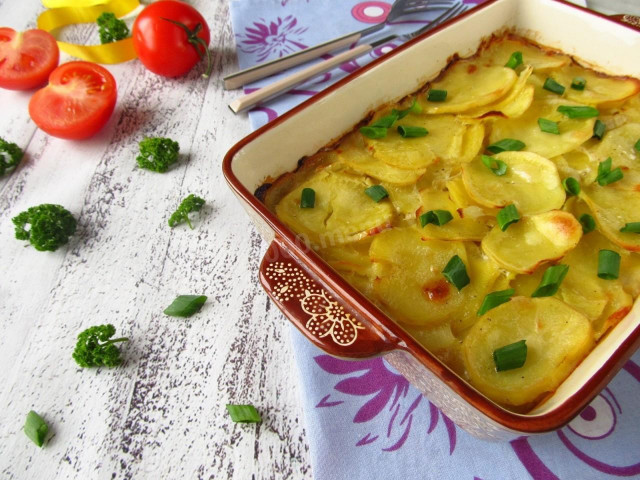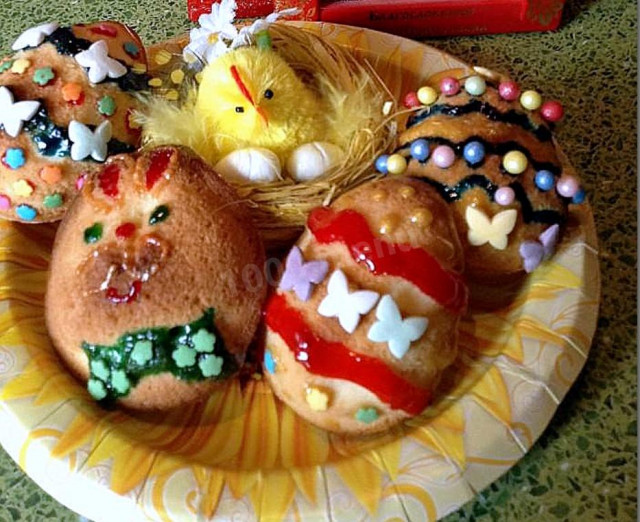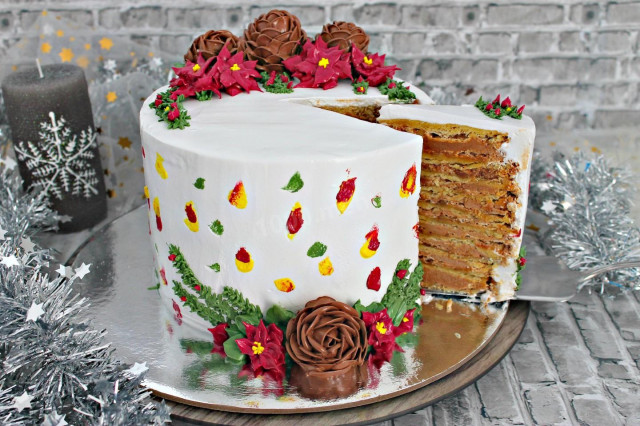Composition / ingredients
Step-by-step cooking
Step 1:
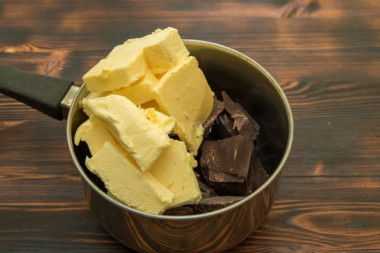
Put the oven to warm up at 180 degrees and prepare the dough. Take a good quality bitter chocolate, break it into pieces, put them in a small saucepan with a thick bottom. Add the chopped butter and put it on a small fire. Melt, stirring the contents. It is important not to overheat the mixture, otherwise the chocolate may curdle. You can melt it in a water bath or in a microwave.
Step 2:
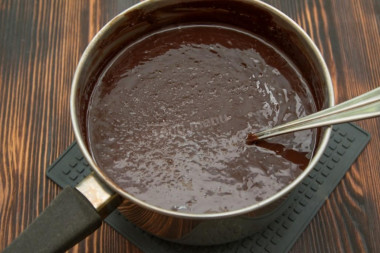
Remove the pan with the chocolate-butter mixture from the heat, add sugar or sweetener. Stir until the sugar crystals completely dissolve.
Step 3:
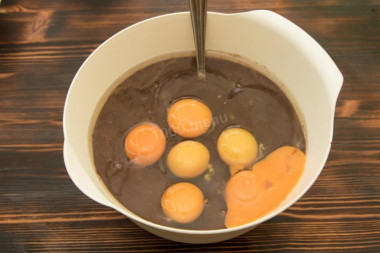
Let the mute mixture cool down and put the eggs and yolks into it. Make sure that the chocolate mixture is not hot, otherwise the eggs will curdle. Mix the dough thoroughly with a whisk or mixer at low speed.
Step 4:
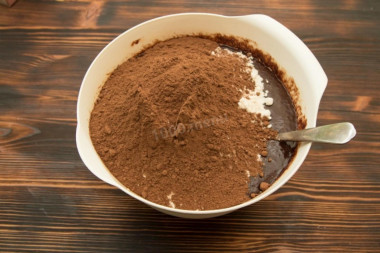
Pour the sifted flour and cocoa powder into the mixture. Mix everything very well until smooth and smooth. It is not necessary to stir for a long time, so that gluten does not stand out from the flour and the consistency of the dough does not turn out too dense.
Step 5:
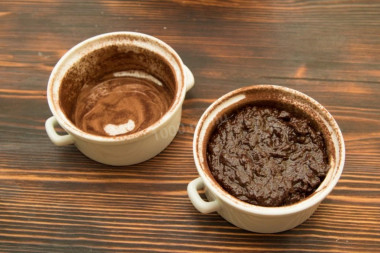
Grease the cupcake molds (I have ceramic ones) with a piece of butter and sprinkle cocoa through a fine sieve, so you can then easily get the cupcakes out of the mold. Spread the dough into molds and send them to the oven for 5-10 minutes (the baking time depends on the size of the molds, as well as the desired consistency of the chocolate inside). Remove the molds from the oven as soon as the cupcakes are "grabbed" from above. Serve them hot or warm with cold ice cream.
Be sure to wash the eggs before use, as even the seemingly clean shell may contain harmful bacteria. It is best to use food detergents and a brush.
Be prepared for the fact that flour may need more or less than indicated in the recipe. Focus not on the amount of flour, but on the desired consistency of the dough. Read a lot of useful information about flour and its properties in this article!
It is important to sift the flour to saturate it with oxygen. Then the baking will turn out to be airy and will rise well when baking.
Instead of sugar, you can use a sweetener that is not afraid of heat treatment.
Butter can be melted in the microwave in the appropriate mode (read the instructions for your device) or in a water bath. How to melt butter in a water bath? You will need two containers of different diameters. Pour water into a large one and put it on the stove. Place the smaller container on top so that it is submerged in water by about half. Put the sliced butter into it. Under the influence of boiling water, the oil will begin to melt. Stir the oil slightly to speed up the process. As soon as the pieces of oil are completely dissolved, remove the container from the stove.
Keep in mind that everyone's ovens are different. The temperature and cooking time may differ from those specified in the recipe. To make any baked dish successful, use useful information in this article !
In order for the oven to have time to heat up to the desired temperature, turn it on in advance (10-20 minutes before the start of cooking).
Any heat-resistant mold is suitable for this recipe. If you use a silicone mold, then you do not need to smear it with butter or margarine. But it is better to lightly lubricate metal, ceramic or glass dishes with vegetable oil so that the baking does not burn.
Caloric content of the products possible in the composition of the dish
- Chicken egg - 157 kcal/100g
- Egg white - 45 kcal/100g
- Egg powder - 542 kcal/100g
- Egg yolk - 352 kcal/100g
- Ostrich egg - 118 kcal/100g
- Whole durum wheat flour fortified - 333 kcal/100g
- Whole durum wheat flour universal - 364 kcal/100g
- Flour krupchatka - 348 kcal/100g
- Flour - 325 kcal/100g
- Butter 82% - 734 kcal/100g
- Amateur unsalted butter - 709 kcal/100g
- Unsalted peasant butter - 661 kcal/100g
- Peasant salted butter - 652 kcal/100g
- Melted butter - 869 kcal/100g
- Cocoa powder - 374 kcal/100g
- Bitter chocolate - 539 kcal/100g
- Egg yolks - 352 kcal/100g
- Brown Sugar - 394 kcal/100g
